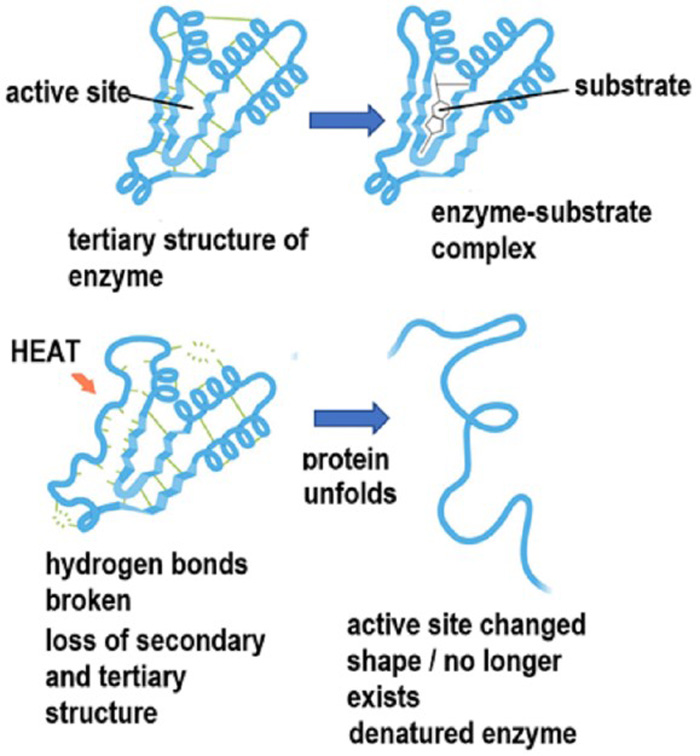Effect of Temperature on Enzymes
1/5
There's no tags or description
Looks like no tags are added yet.
Name | Mastery | Learn | Test | Matching | Spaced |
|---|
No study sessions yet.
6 Terms
What happens to enzyme activity as temperature approaches the optimum level?
As temperature increases towards the optimum, enzymes and substrates gain kinetic energy, resulting in more successful collisions and an increase in enzyme-substrate complexes, thus increasing the rate of reaction.
What is the effect of temperature on enzyme structure above the optimum temperature?
Above the optimum temperature, increased heat causes bonds in the enzyme to vibrate and break, leading to a loss of secondary and tertiary structure and altering the 3D shape of the active site.
What is the result of an enzyme becoming denatured?
When an enzyme is fully denatured, its active site changes shape and can no longer form bonds with the substrate, effectively stopping its function.

What is the term for an enzyme that has lost its functional shape due to heat?
The enzyme is said to be fully denatured.
What happens to the bonds in enzymes as temperature increases?
As temperature increases, weak hydrogen bonds in the enzyme are broken first, leading to structural changes.
What is meant by the term 'optimum temperature' for an enzyme?
The optimum temperature is the temperature at which an enzyme operates most efficiently, allowing for maximum reaction rate without denaturing.